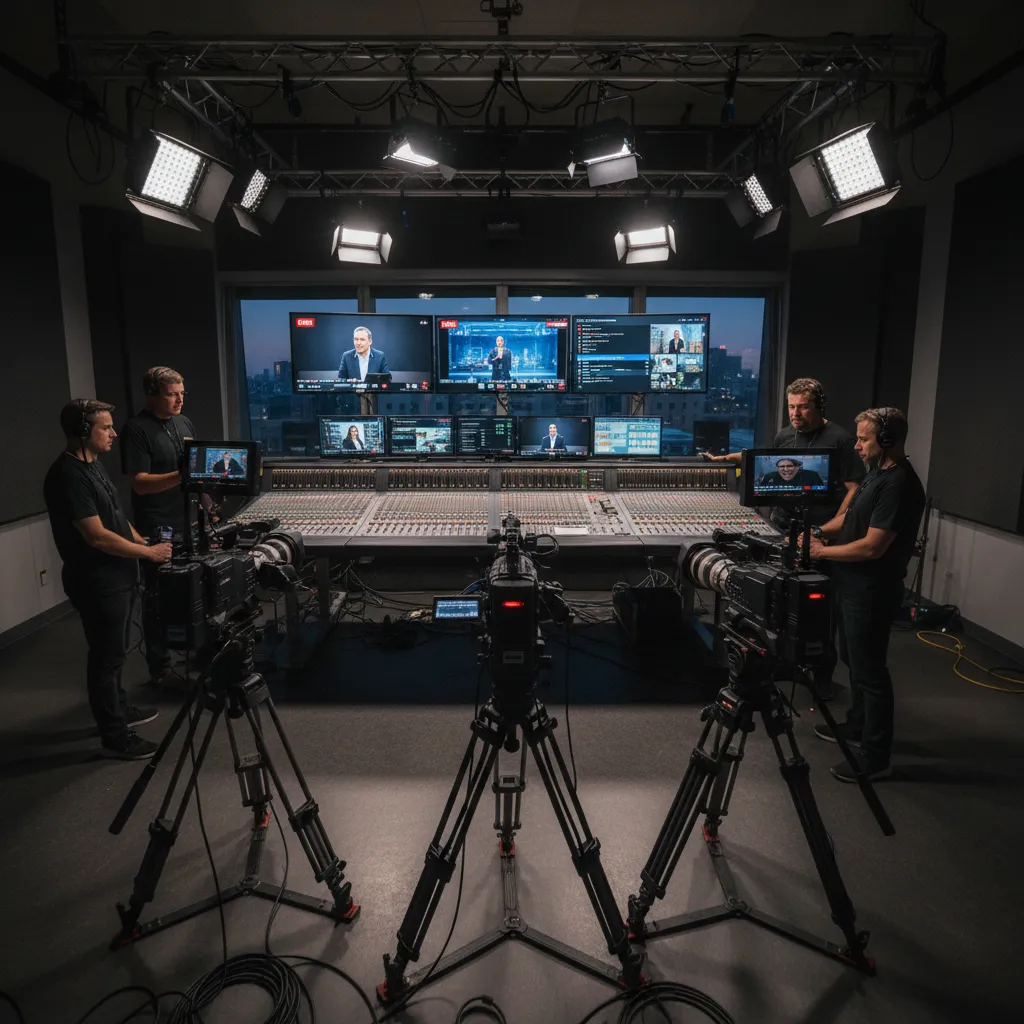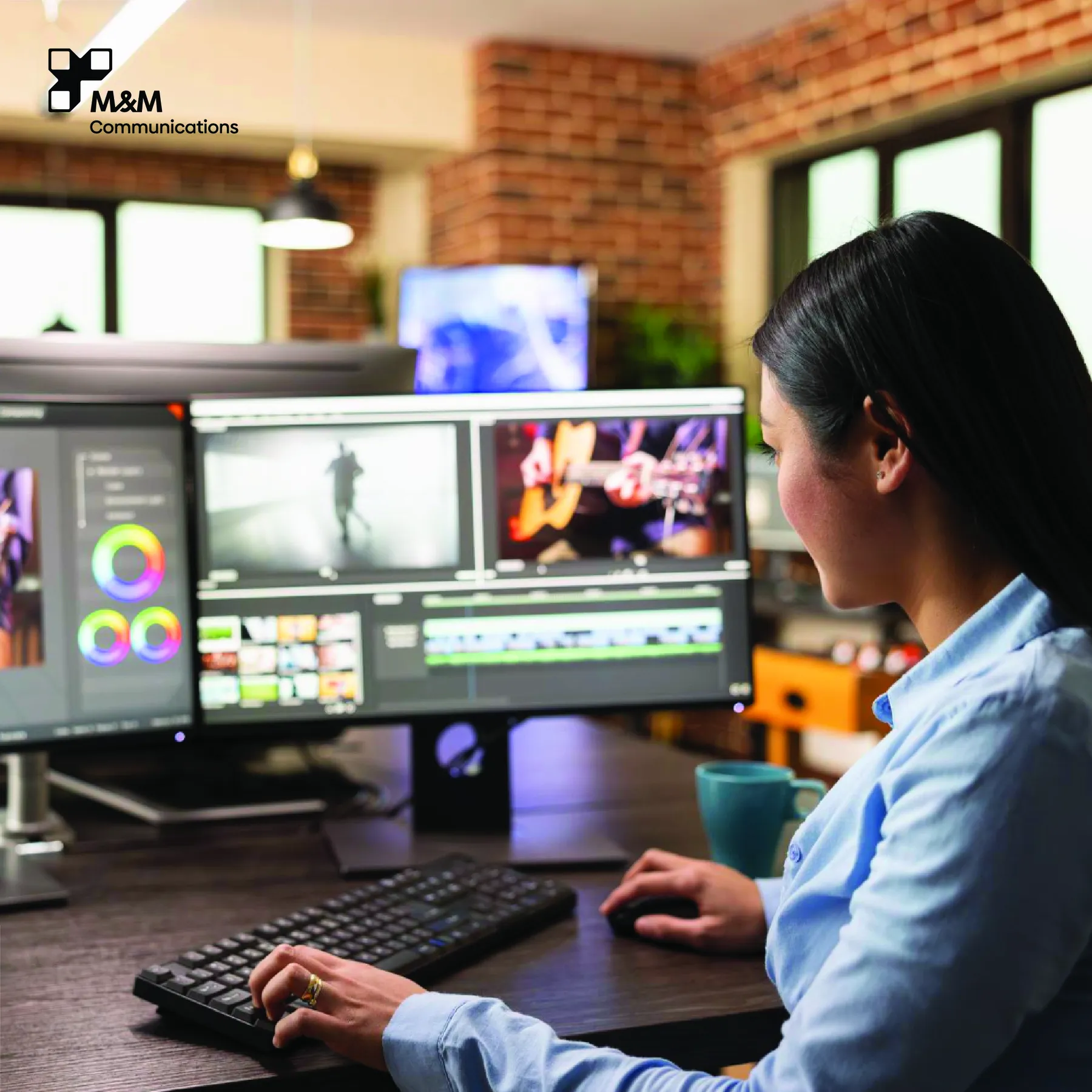
Livestream Production: Technical Setup and Program Management for Professional Broadcasting
Mastering Professional Livestream Production for Maximum Impact
Livestream production has evolved from simple webcam broadcasts to sophisticated multimedia experiences that rival traditional television production quality. At M&M Communications, we've managed livestream productions for corporate events, product launches, and brand activations, understanding that successful livestreaming isn't just about technical execution—it's about creating inspirational and magical stories that connect authentically with live audiences and build lasting relationships through real-time engagement.
Understanding the Livestream Production Landscape
Modern livestream production operates at the intersection of broadcast television, digital marketing, and social media engagement. Success requires mastering technical complexities while maintaining the spontaneous, authentic feel that makes live content so compelling for contemporary audiences.
Professional livestream production offers unique advantages over pre-recorded content: real-time audience interaction, authentic moment creation, immediate feedback loops, and the psychological urgency that encourages higher engagement rates. These benefits make livestreaming particularly valuable for product launches, educational content, and community building initiatives.
Essential Technical Setup Components
Multi-Camera Systems and Switching
Professional livestream production benefits from multiple camera angles that create visual variety and maintain viewer engagement throughout longer broadcasts. A typical setup includes wide shots for context, medium shots for presentations, and close-ups for emotional connection and detail work.
Video switching equipment enables seamless transitions between camera angles, graphics integration, and source management during live broadcasts. Software solutions like OBS Studio provide cost-effective switching capabilities, while hardware mixers offer superior reliability and professional features for high-stakes productions.
Plan camera positioning strategically to avoid crossing the 180-degree rule, ensure adequate lighting for all angles, and provide operators with clear sightlines and communication capabilities during live production.
Professional Audio Systems
Audio quality often determines livestream success more than visual elements, as poor audio drives away viewers faster than any other technical issue. Professional audio setup includes multiple microphone types: lavalier mics for presenters, shotgun mics for ambient sound, and handheld mics for audience interaction.
Audio mixing boards enable real-time level adjustment, EQ correction, and effects processing during live broadcasts. Include backup audio sources and monitoring systems to prevent audio failures that can destroy professional credibility.
Consider acoustic treatment for broadcast spaces, using portable acoustic panels, carpets, or curtains to reduce echo and improve overall audio quality in challenging environments.
Lighting Design for Live Production
Consistent, flattering lighting becomes crucial for professional livestream appearance, particularly with multiple camera angles and presenter movements. LED panel systems provide adjustable color temperature and intensity that adapts to changing conditions throughout longer broadcasts.
Design lighting setups that accommodate presenter movement while maintaining consistent exposure and color temperature. Include background lighting that creates depth and visual interest without distracting from primary content.
Plan for emergency lighting scenarios and power backup systems that prevent production disasters due to technical failures during live broadcasts.
Streaming Software and Platform Selection
Professional Streaming Software
OBS Studio provides comprehensive streaming capabilities including scene management, source integration, real-time effects, and multi-platform streaming. Its plugin ecosystem enables advanced features like automated switching, graphics integration, and advanced audio processing.
XSplit offers user-friendly interfaces with professional features, making it ideal for productions that need sophisticated capabilities without extensive technical expertise. Its built-in graphics and transitions create polished productions efficiently.
Wirecast delivers broadcast-quality live streaming with advanced features like virtual sets, replay systems, and professional graphics integration. Consider this platform for high-end productions requiring television-quality output.
Platform-Specific Optimization
Different streaming platforms have unique technical requirements, audience expectations, and algorithmic preferences. YouTube Live favors longer-form content with high production values, while Facebook Live prioritizes community interaction and mobile-friendly formats.
LinkedIn Live targets professional audiences with educational content and thought leadership, requiring more polished presentations and industry-relevant topics. Instagram Live focuses on authentic, behind-the-scenes content that feels spontaneous and personal.
Twitch emphasizes gaming and entertainment content with heavy audience interaction, making chat engagement and community building essential for success on this platform.
Interactive Elements and Audience Engagement
Real-Time Chat Management
Live chat interaction transforms passive viewing into active participation, creating community experiences that build stronger brand relationships. Develop chat moderation strategies that encourage positive engagement while preventing spam or inappropriate content.
Assign dedicated team members to monitor chat, respond to questions, and highlight viewer comments for on-screen discussion. This real-time interaction creates personalized experiences that pre-recorded content cannot replicate.
Use chat analytics to understand audience interests, frequently asked questions, and engagement patterns that inform future content development and livestream optimization strategies.
Polls, Q&As, and Interactive Features
Interactive elements like polls, Q&A sessions, and viewer challenges increase engagement while providing valuable audience insights. Plan interactive segments strategically throughout broadcasts to maintain energy and prevent viewer drop-off.
Prepare backup interaction strategies for technical failures or low participation rates. Having pre-planned questions, topics, or demonstrations ensures smooth broadcasts regardless of audience response levels.
Follow up on interactive elements with dedicated social media posts, email communications, or future livestream content that continues conversations started during live broadcasts.
Content Planning and Program Management
Pre-Production Planning
Successful livestream production requires detailed planning that balances structured content with flexibility for spontaneous moments. Develop comprehensive run sheets that include timing, topic outlines, technical cues, and interactive segments.
Create backup content plans for technical difficulties, low engagement periods, or shorter-than-expected main content. Having additional topics, demonstrations, or Q&A materials prevents awkward pauses or early broadcast endings.
Rehearse technical transitions, graphics integration, and presenter coordination to ensure smooth execution during live broadcasts when mistakes cannot be edited out.
Team Coordination and Communication
Professional livestream production requires coordinated teamwork with clear communication systems. Use headset communication between directors, camera operators, and technical staff to manage complex productions without disrupting live broadcasts.
Assign specific roles and responsibilities: director for overall production management, technical director for switching and graphics, audio engineer for sound management, and social media manager for chat interaction and platform management.
Establish clear hand signals and backup communication methods for situations where audio communication might fail or interfere with broadcast audio.
Quality Control and Technical Reliability
Internet Connection and Bandwidth Management
Reliable internet connectivity forms the foundation of successful livestream production. Use dedicated, wired internet connections with sufficient upload bandwidth for chosen streaming quality. Calculate bandwidth requirements carefully, allowing overhead for quality fluctuations and platform requirements.
Implement backup internet connections through different providers or mobile hotspot systems to prevent total broadcast failures due to connectivity issues. Load balancing between multiple connections can improve stream stability and quality.
Monitor connection quality continuously during broadcasts, using tools that display real-time bandwidth usage, packet loss, and connection stability metrics.
Equipment Redundancy and Backup Systems
Professional livestream production requires backup systems for all critical components: cameras, audio sources, internet connections, and power supplies. Equipment failures during live broadcasts can destroy professional credibility and audience trust.
Develop systematic backup procedures that can be implemented quickly without disrupting ongoing broadcasts. This includes hot-swappable equipment, backup presenters, and alternative content ready for immediate deployment.
Test all backup systems regularly to ensure functionality when needed. Backup equipment that fails during emergencies creates worse problems than having no backup systems at all.
Monetization Strategies for Live Content
Direct Monetization Approaches
Live streaming offers various direct monetization opportunities: ticket sales for premium content, product sales during broadcasts, and donation/tip systems that reward valuable content. Plan monetization integration that feels natural rather than disruptive to viewer experience.
Subscription models create recurring revenue while building dedicated communities around regular livestream content. Offer exclusive benefits like early access, behind-the-scenes content, or direct interaction opportunities for subscribers.
Indirect Business Value
Livestream production builds brand awareness, demonstrates expertise, and creates authentic connections that support broader business objectives. Use livestreaming for lead generation, customer education, and community building that drives long-term business growth.
Measure livestream ROI through lead quality improvements, customer satisfaction increases, and brand awareness metrics rather than only direct revenue generation. These indirect benefits often exceed direct monetization value.
Post-Broadcast Content Strategy
Recording and Repurposing
Professional livestreams generate valuable content assets that extend beyond live viewing audiences. Record high-quality versions for later editing, social media clips, and evergreen content that provides ongoing value.
Edit livestream recordings into shorter segments, highlight reels, and platform-specific content that maximizes reach and engagement across multiple channels. This repurposing strategy multiplies livestream investment returns.
Create show notes, transcripts, and supplementary materials that transform livestream content into comprehensive resource libraries for ongoing audience value.
Community Follow-Up
Continue engagement after livestreams end through follow-up communications, social media discussions, and planning for future broadcasts based on audience feedback and engagement patterns.
Use post-broadcast analytics to understand viewer behavior, engagement patterns, and content preferences that inform future livestream strategies and content development.
Emerging Trends in Livestream Production
Virtual and Augmented Reality Integration
VR and AR technologies create immersive livestream experiences that transport audiences into virtual environments or overlay digital information onto real-world broadcasts.
AI-Enhanced Production
Artificial intelligence tools increasingly automate technical aspects of livestream production, including automated camera switching, real-time graphics generation, and chat moderation.
Conclusion: Building Professional Livestream Capabilities
Professional livestream production combines technical expertise with authentic storytelling to create compelling real-time experiences that build stronger audience relationships and drive measurable business results. Success requires mastering both technical complexities and content strategy while maintaining the spontaneous authenticity that makes live content so powerful.
At M&M Communications, we understand that effective livestream production isn't just about technical perfection—it's about creating inspirational and magical stories that unfold in real-time, connecting authentically with live audiences while building lasting relationships through genuine interaction and valuable content delivery.
The future belongs to organizations that can master live content creation while maintaining professional standards and authentic audience connections. Invest in comprehensive livestream capabilities today, and discover how this powerful medium can transform your content strategy and audience relationships.






